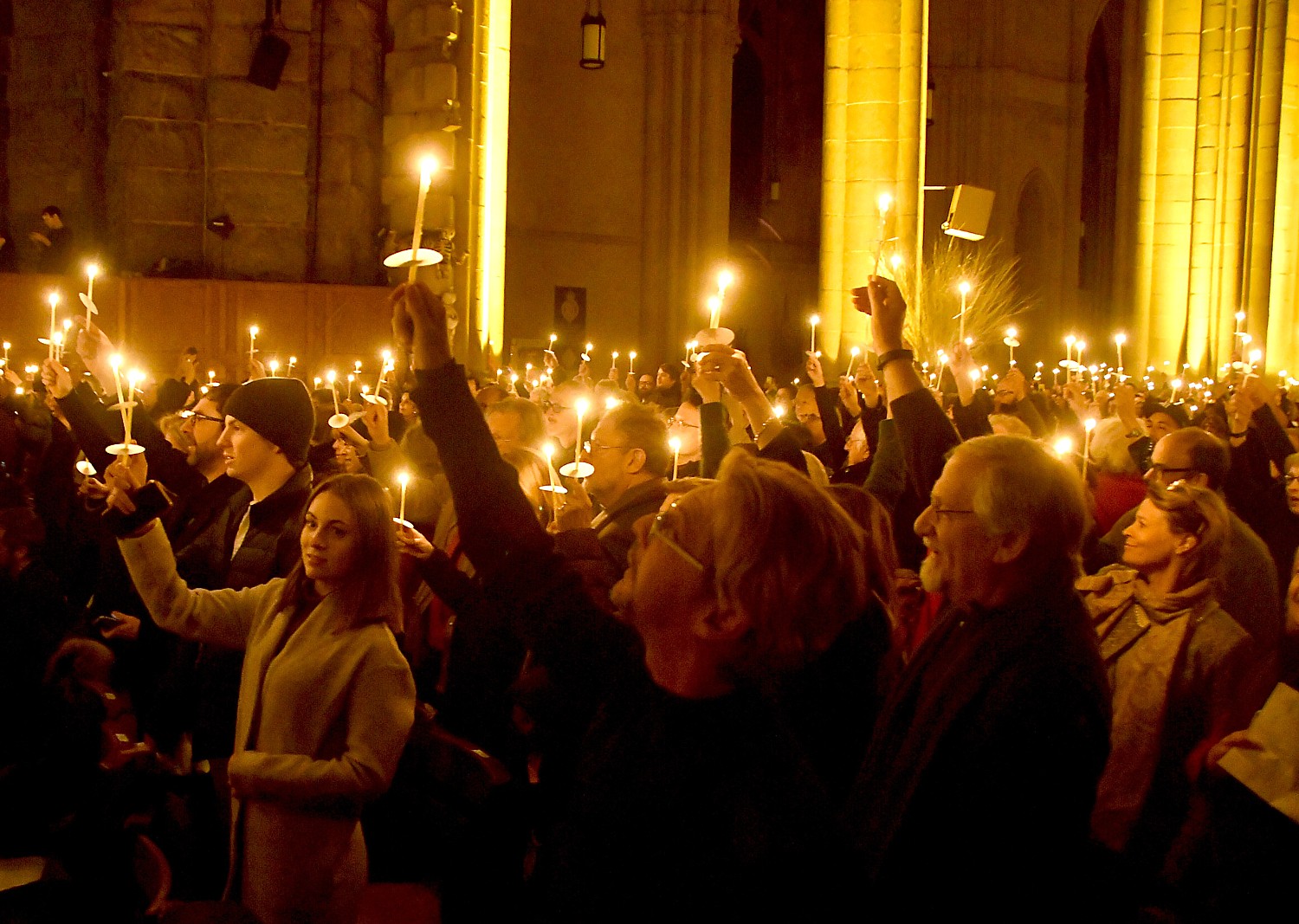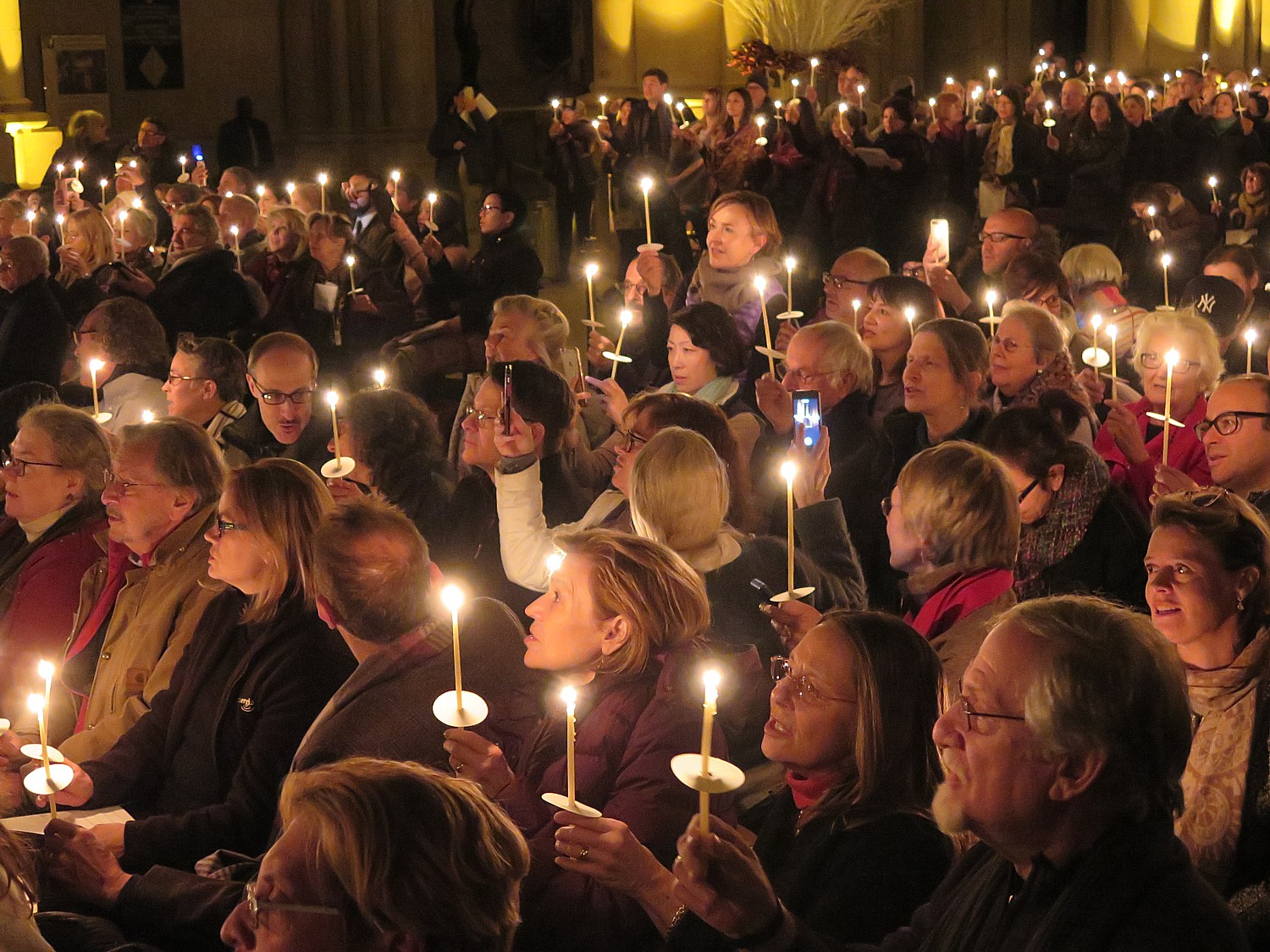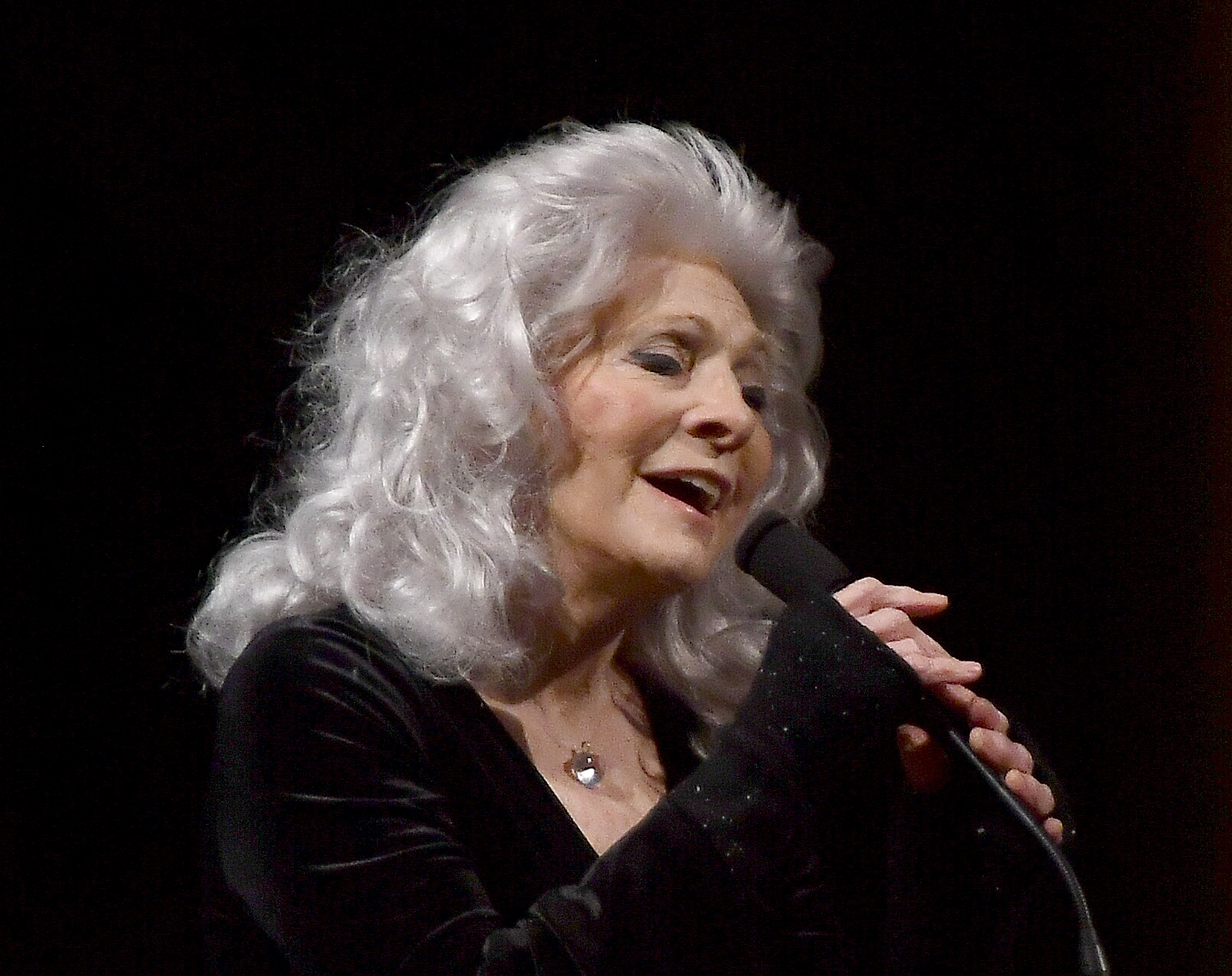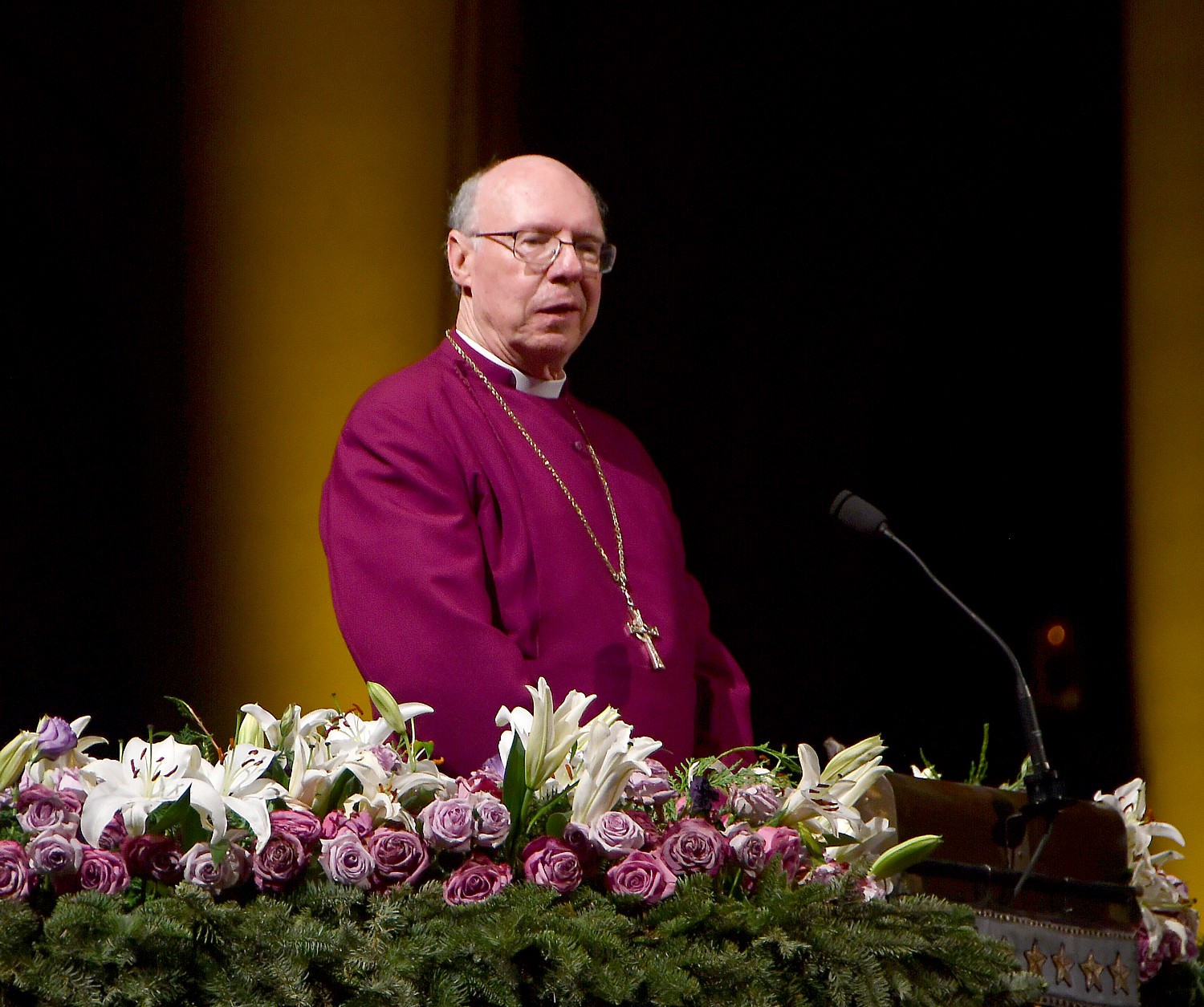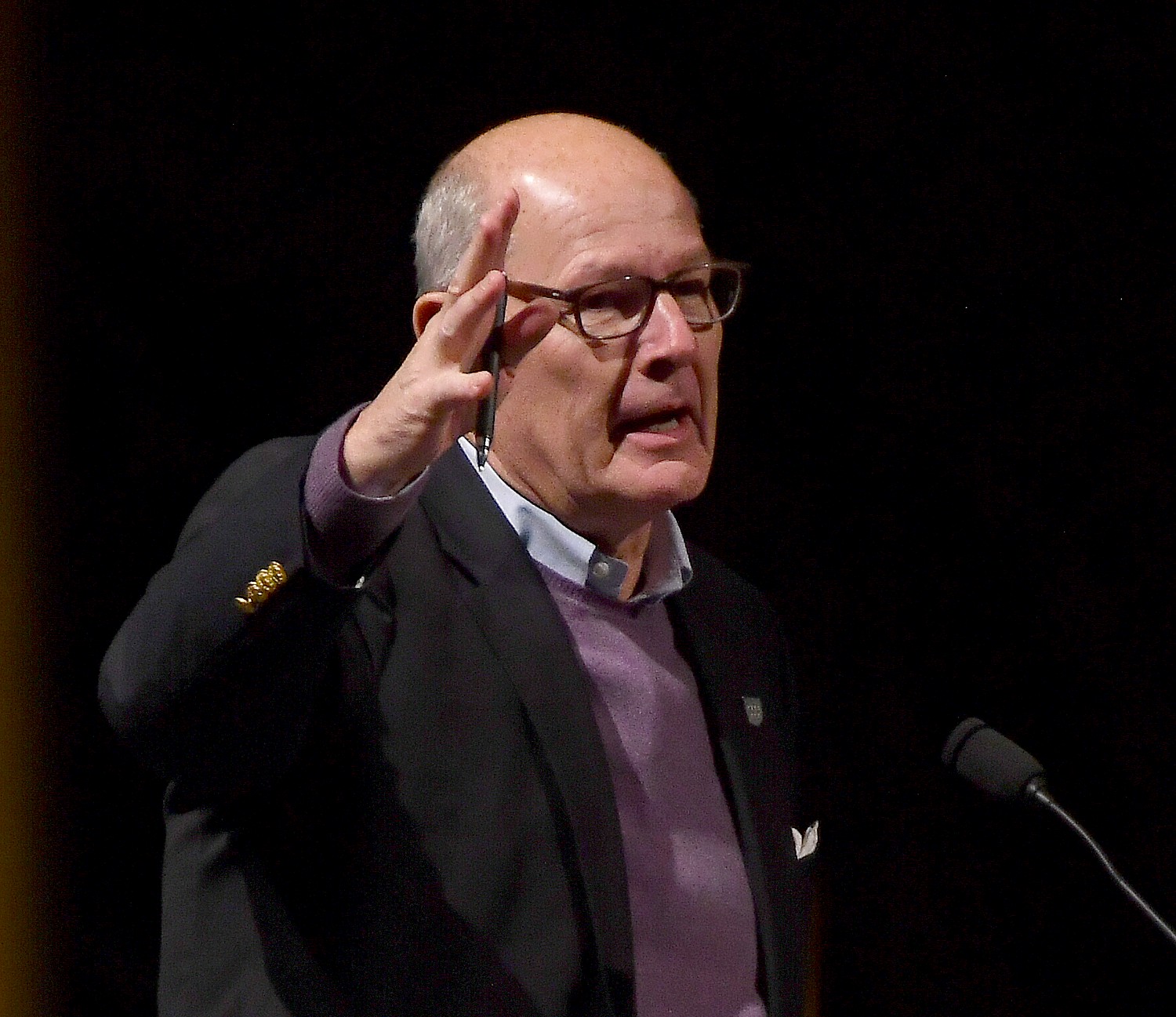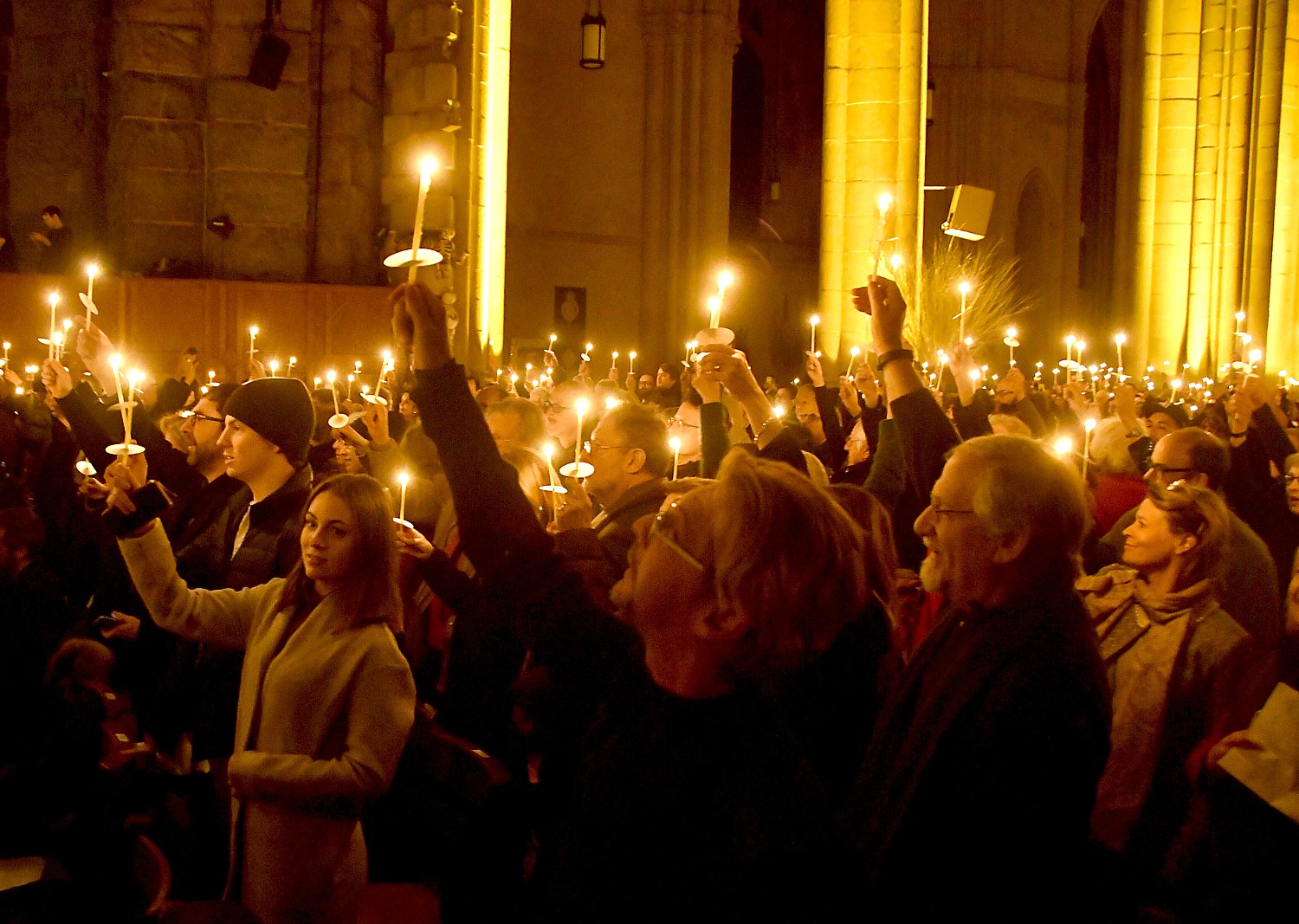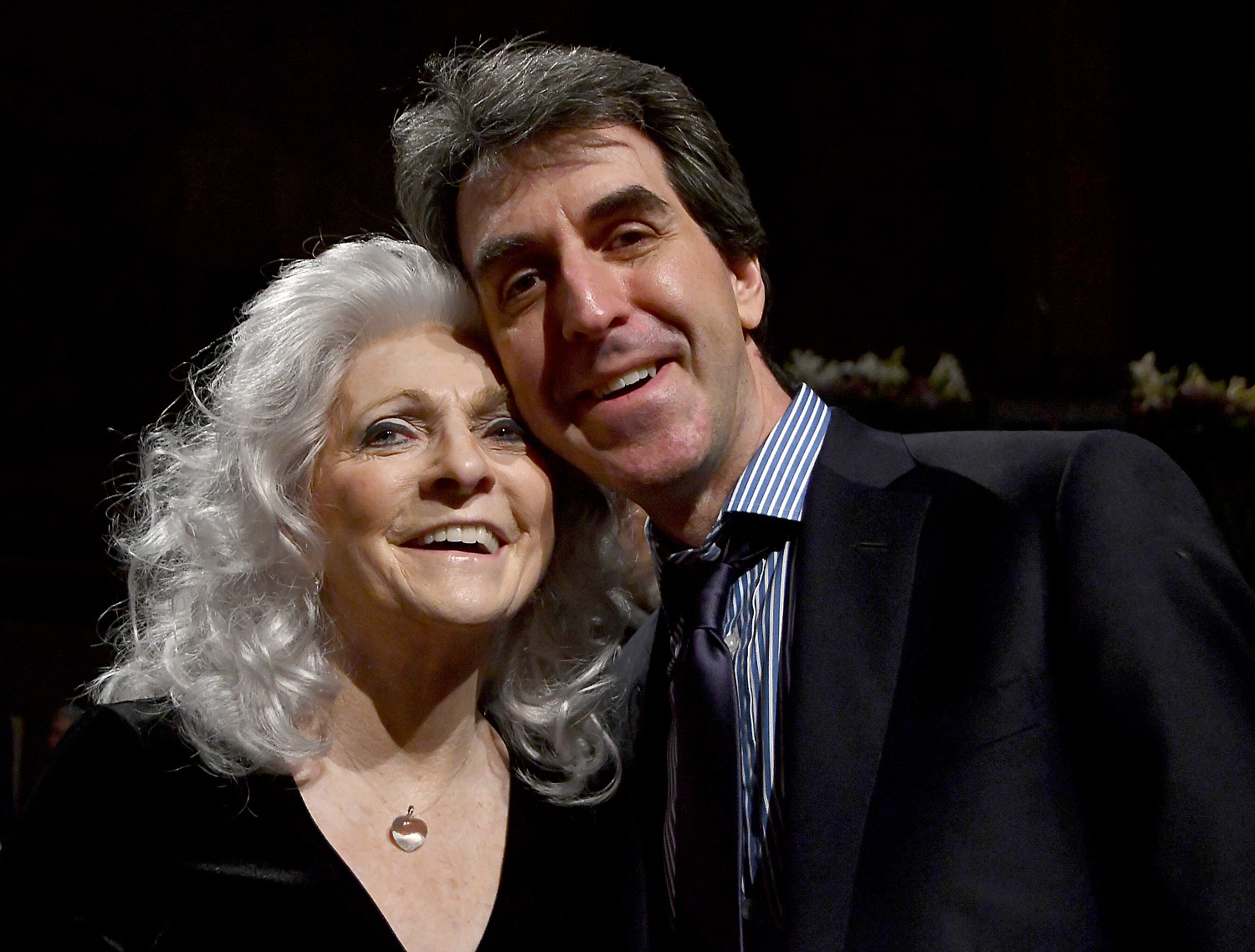
By Karen Rubin, Travel Features Syndicate, goingplacesfarandnear.com
One of my favorite ways to bid adieu to the year and begin anew is the annual Concert for Peace at the magnificent Cathedral Church of St. John the Divine, now in its 34th year. This is a signature New Year’s Eve event that was founded by Leonard Bernstein in 1984 with the idea of bringing together New Yorkers and visitors from around the world for an evening filled with uplifting music. It is an event that rings in the new year with inspiration and resolve.
Led by Kent Tritle, Director of Cathedral Music, this year’s concert featured soloist Sidney Outlaw joining the choir for Robert Convery’s powerful setting of Martin Luther King, Jr.’s I have a dream during the 50th anniversary year of King’s assassination and the 20th anniversary of his composition.

The choir performed make peace by David Lang and presented the New York premiere of Wayne Oquin’s Alleluia. Jason Robert Brown performed his stirring composition, “Singing You Home” with vocalists Kate Baldwin and Ashley Perez Flanagan, a newly written spiritual performed with Spanish and English lyrics expressly for the separated migrant families.

Jason Robert Brown, Tony Award-winning composer and lyricist, performed “Singing You Home,” which he wrote for the separated migrant families with vocalists Kate Baldwin and Ashley Perez Flanagan © Karen Rubin/goingplacesfarandnear.com
Paul Winter performed on soprano sax his composition, “Sun Singer, written with Paul Hatley.

Paul Winter on soprano sax performs “Sun Singer which he composed with Paul Halley © Karen Rubin/ goingplacesfarandnear.com
The concert also included music by included William Boyce’s Symphony No. 1 in B-flat; Mozart’s Symphony No. 29 in A Major, J.S. Bach’s Dona nobis pacem from his Mass in B minor.

The Cathedral Choir’s own Jamet Pittman led the audience inThis little light of mine as the entire congregation lit candles and basked in the glow to welcome the new year with hope, joy, and affirmation.
Here are more highlights:




The Cathedral itself is a marvel. Originally designed in 1888, with construction beginning in 1892, the cathedral has undergone radical stylistic changes and the interruption of the two World Wars. It started out in Byzantine Revival-Romanesque Revival style, but the plan was changed to Gothic Revival in 1909. A major fire on December 18, 2001 caused the cathedral to be closed for repairs until 2008. It remains unfinished with construction and restoration a continuing process – which inside, only adds to the mystique of the place. It boasts being the largest Gothic cathedral, and may be the world’s largest Anglican cathedral and church; it is also the fourth largest Christian church in the world.




The cathedral houses one of the nation’s premier textile conservation laboratories to conserve the cathedral’s textiles, including the Barberini tapestries. The laboratory also conserves tapestries, needlepoint, upholstery, costumes, and other textiles for clients.
There are concerts by the Cathedral Choir and other artists and events throughout the year. Check the website for details.
The Cathedral of St. John the Divine, 1047 Amsterdam Avenue (at 112th Street), New York 10025, 212-316-7540, info@stjohndivine.org, www.stjohndivine.org.
_______________________
© 2019 Travel Features Syndicate, a division of Workstyles, Inc. All rights reserved. Visit goingplacesfarandnear.com, www.huffingtonpost.com/author/karen-rubin, and travelwritersmagazine.com/TravelFeaturesSyndicate/. Blogging at goingplacesnearandfar.wordpress.com and moralcompasstravel.info. Send comments or questions to FamTravLtr@aol.com. Tweet @TravelFeatures. ‘Like’ us at facebook.com/NewsPhotoFeatures


